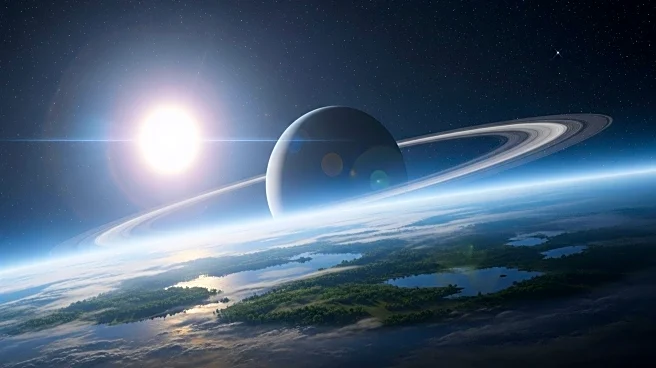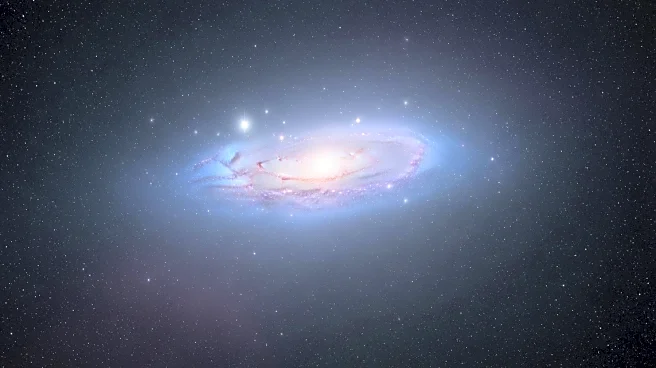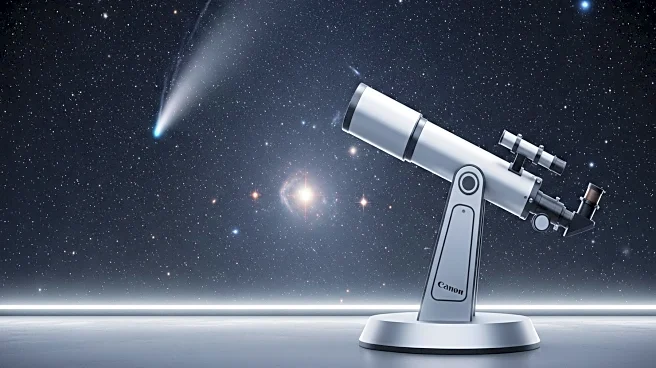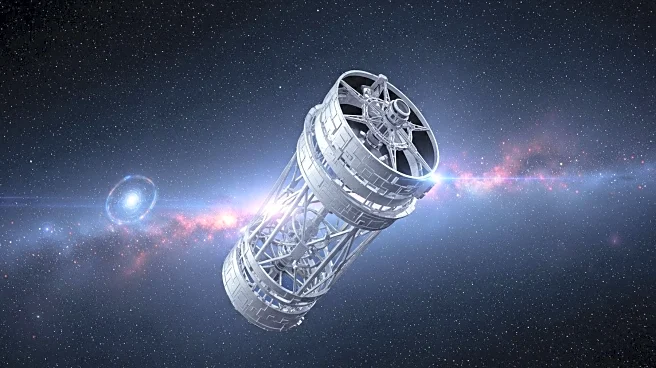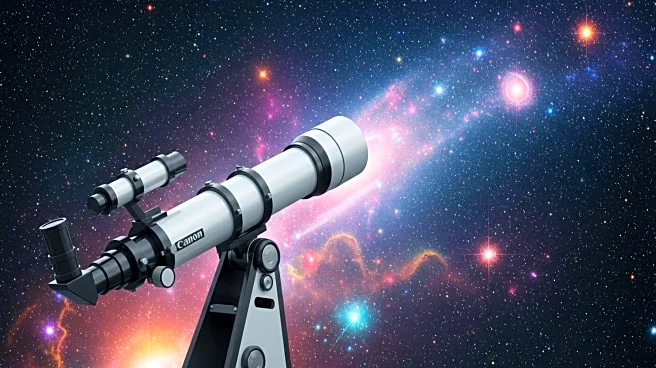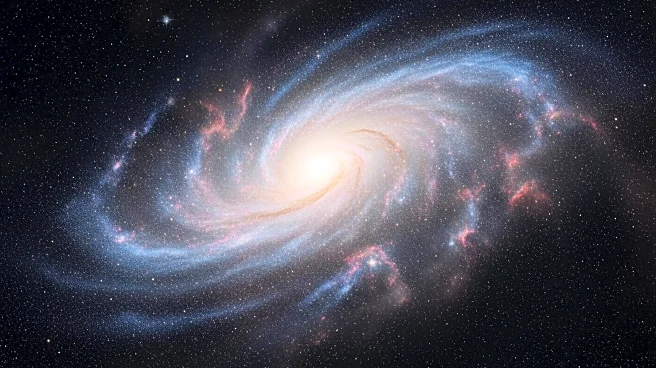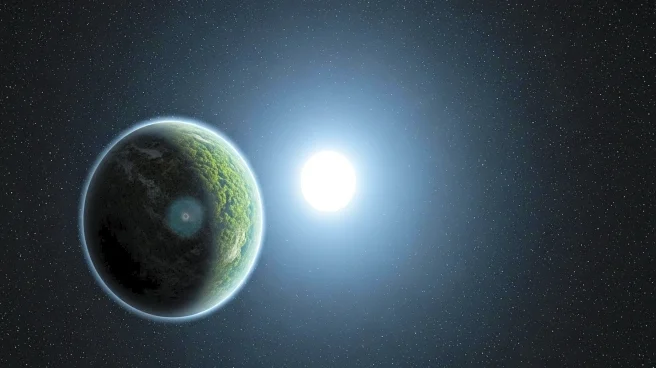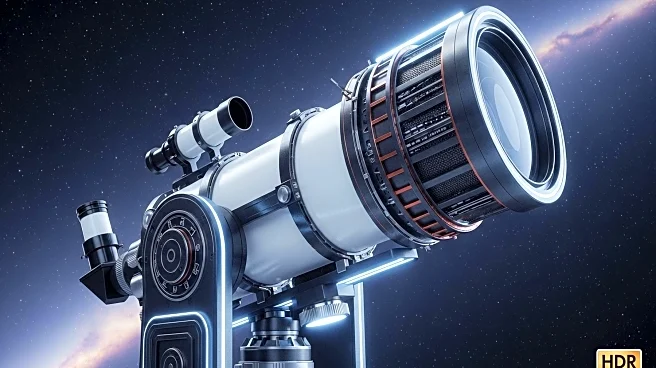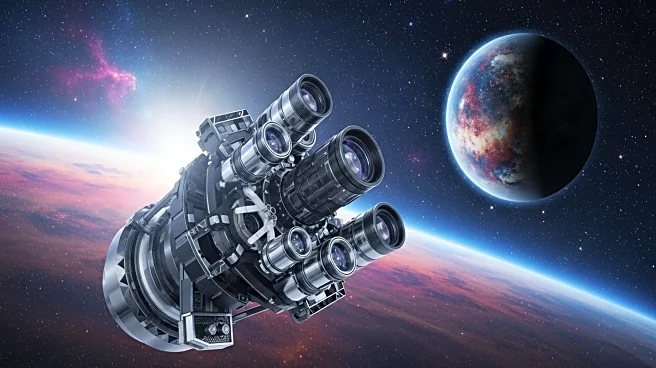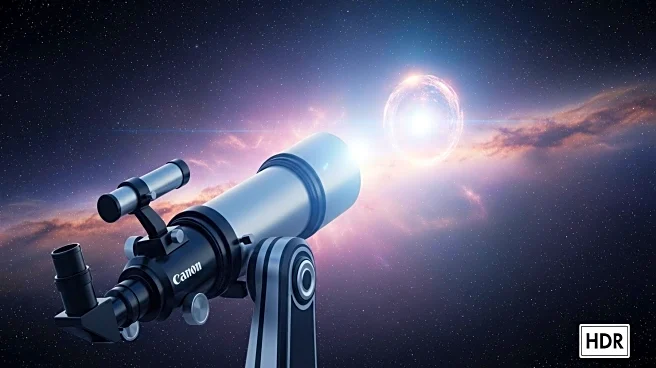What is the story about?
What's Happening?
Astronomers have identified promising signs that TRAPPIST-1e, a planet in the TRAPPIST-1 star system located approximately 40 light years from Earth, may have an atmosphere capable of supporting life. The TRAPPIST-1 system, discovered in 2016, consists of seven planets, three of which lie within the 'Goldilocks zone' where water can remain liquid. Recent observations using the James Webb Space Telescope suggest that TRAPPIST-1e might possess a nitrogen-rich atmosphere, potentially containing life-supporting molecules like methane. This discovery marks a significant moment in the search for habitable conditions beyond Earth.
Why It's Important?
The potential discovery of a life-supporting atmosphere on TRAPPIST-1e could have profound implications for astrobiology and the search for extraterrestrial life. If confirmed, it would suggest that conditions conducive to life exist beyond Earth, potentially expanding our understanding of life's possibilities in the universe. This finding could influence future space exploration missions and scientific research, as astronomers and scientists seek to understand the conditions necessary for life and the potential for intelligent life to evolve on other planets.
What's Next?
Further observations and data collection are planned to confirm the presence of a nitrogen-rich atmosphere on TRAPPIST-1e. Researchers aim to conduct 15 more observations using the James Webb Space Telescope to refine their models and reduce error margins. If the atmosphere is confirmed, scientists will explore the presence of other gases like methane or carbon dioxide and assess the planet's surface temperature to determine the likelihood of liquid water, a key indicator of habitability.
AI Generated Content
Do you find this article useful?
